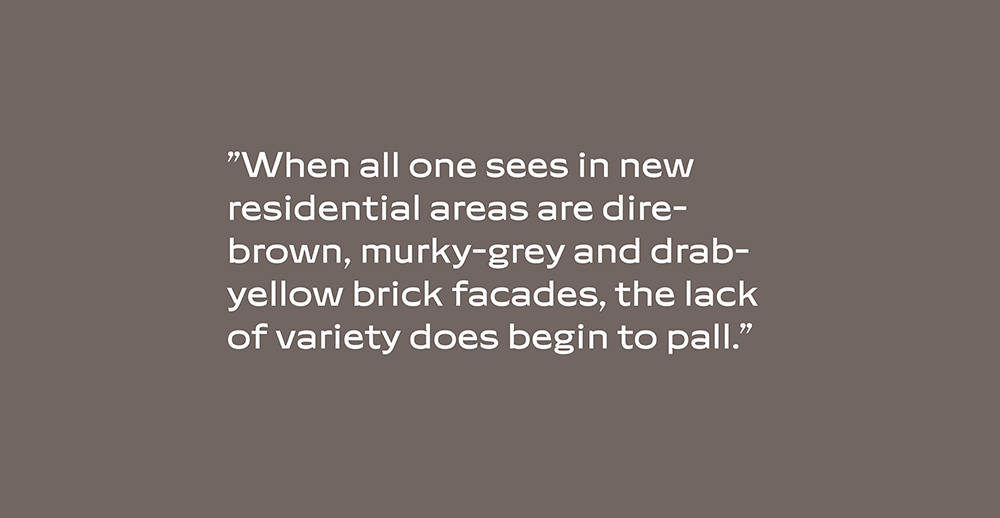Banal Revival
The book discussing the concept of banal is a welcome addition to the ongoing debate on value and demolition in the construction sector.
Stellan Gulde (ed.): Banal Buildings. Anthology. Case Study – Södertälje uthamn. Banal books 2025.
Mundane, ordinary, nondescript, bland, clichéd, corny, gross, crass – an architectural definition? Or, perhaps, mawkish, syrupy, sappy, sentimental? Despite the practically opposite connotations, both sets of definitions can be applied to the word banal.
A newly published Swedish anthology of writings delves into the concept of the banal in architecture and the current state of the discipline in a world that is swept up in a frenzy of demolition and repurposing. The authors of the short yet insightful English articles include Philipp Esch, Matilda Svensk, Jan de Vylder, Josephine Harold, Mikael Parkman and Stellan Gulde, all of whom are architects by trade. The themes are varied, but, as a whole, the compilation poses a fascinating challenge to the prevailing mindset of contemporary architecture.

In the opening article titled ”Sublation”, Philipp Esch asks whether we, the descendants of modernism, are bereft of proper strategies when encountering a banal, insignificant building. According to Esch, the philosophical term sublation refers to something that is not gone despite being removed. Fleeting yet permanent all at once.
As an example, Esch reminds us of the urban fabric of Rome, which, to this day, bears echoes of ancient monuments: the footprint of the Theatre of Pompey in the shapes of city blocks and the Stadium of Domitian that is currently known as Piazza Navona. Anyone who knows Roman architecture is aware that old buildings were unceremoniously torn down over the course of history but that their materials were recycled and reused in new public buildings or everyday construction. This recycled material is a manifestation of sublation: the material is present, even if the original form is no longer there.
As another example closer to home, one might mention the 800,000 red bricks that Finnish engineering students cleaned in 1949 to be used as building material for the first student housing blocks at the Otaniemi campus. The sublated memory is solidified by the knowledge that the bricks came from the Embassy of the Soviet Union that was bombed to the ground by the Soviets themselves during the Continuation War.

Matilda Svensk’s article discusses the concept of coherence, and the author notes that we should remain aware of and understand the means to describe the persistent presence of buildings that are often dismissed as inconsequential, thereby discovering new ways to value our environment. Svensk bases her writing on the dissertation by Angelo Lunati (2000), in which Lunati describes the ways in which buildings constitute the architecture of our experience, a collective atmosphere of society, culture and history.
Josephine Harold, then, presents a beautiful account of her own experience with a house built by her grandparents that is transforming in the hands of new inhabitants. Harold positions architecture as the source of dynamic, constant change and concludes her article by listing a few theses related to building and renewal, stating that we ought to acquire technical competence and then specialise in working with what already exists.
Working with existing constructions is also at the focus of Mikael Parkman’s contribution, as he suggests that an architect should be able to let things happen at their own pace. ”If only we could dare to let things be a little banal, we might not miss out on the chance to be part of something truly great.”
The compilation poses a fascinating challenge to the prevailing mindset of contemporary architecture.

The book also delves in more detail into one case study of urban planning. The former harbour area of Södertälje uthamn in Sweden represents a typical urban grey zone – it entails large numbers of storage and industrial buildings, which is to say precisely the type of constructions whose valuation is one of the key premises of the book. The aim is to preserve some of the existing building stock, find new uses for it and let it tell the story of the area’s past, enriching the experience of the future residents. The case illustrates the theoretical ideas of the book and was also the focus of an exhibition on banal architecture in the empty Luna shopping mall in the centre of Södertälje in autumn 2024.
Södertälje is an excellent canvas for a new mindset of urbanism. The area is located within easy reach from all over the growing Greater Stockholm, which is gradually creeping up on the nearby towns and cities. The problem building in the area is the colossal industrial hall designed by Ralph Erskine in 1953, which has been proposed for demolition in the preliminary city plan. New uses have been sought for the building as, for instance, a cultural space or the world’s largest padel hall.
Banal Buildings is beautifully laid out, with pleasantly loose typesetting, fascinating imagery and clear drawings. This piece of high-quality literature is a welcome addition to the ongoing debate on value and demolition in the construction sector. ↙
ESA LAAKSONEN is an architect, non-fiction author and architecture and art critic.






